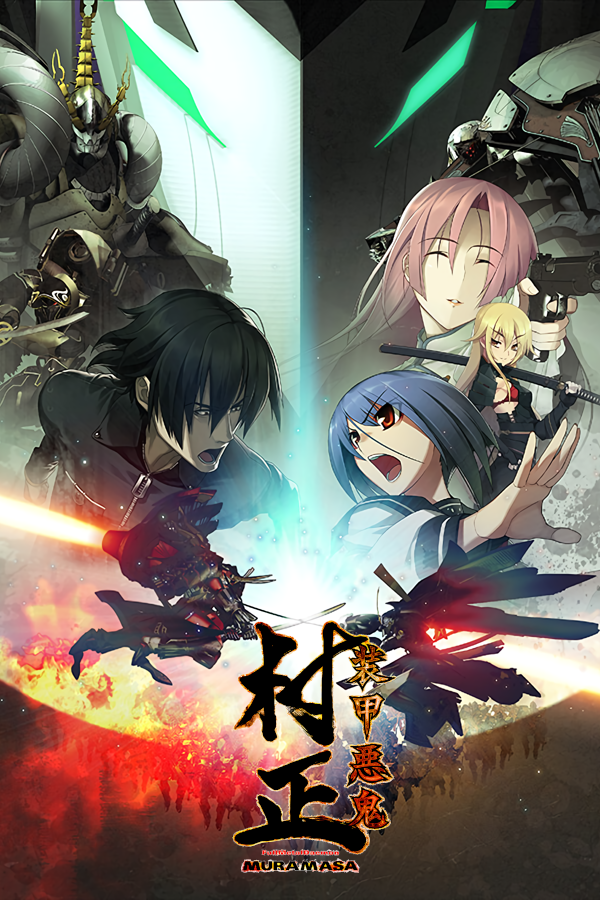Around 15 years ago, when I was still in high school, I stumbled upon fan art of a character named Sansei Muramasa (see below) when I was browsing newly uploaded illustrations on Pixiv. There was a lot about the character I really liked, so I decided to look up the source material thinking she was from an anime or manga. Back then, I was really disappointed to learn that Muramasa was from a visual novel named Soukou Akki Muramasa, or Full Metal Daemon Muramasa as it's called in English.
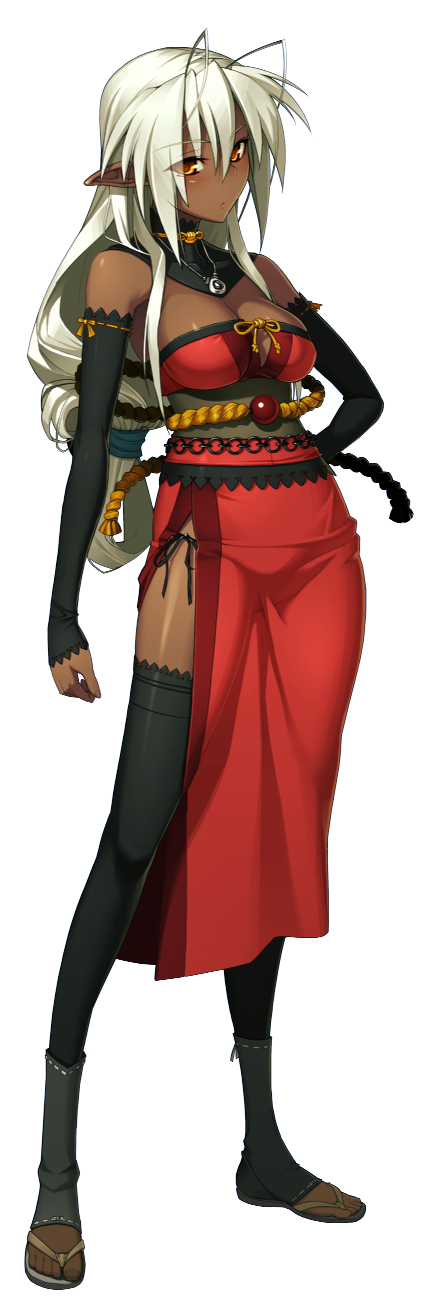
Worst of all, there was no hint of an official translation coming anytime soon. And it actually wasn't available until 2021! There was a considerable amount of time between the time I first found out about this visual novel and when I actually got to read it. I'm not sure how much of an impact it would've had on me if I read it in my adolescence, but after spending around 80 hours with Full Metal Daemon Muramasa, I can say that it's a story that will stick with me for the rest of my life.
When I originally found Muramasa on the Visual Novel Database and looked up opinions for the visual novel on various forums, the people who were able to read it mentioned the story was very dark and also praised it as a piece of literature. I also remember hearing how it was challenging for those who were learning Japanese because it was very dense.
If you'd like a sense of how long the Full Metal Daemon Muramasa is, according to JPDB.io it has a total word count of 563,594. For comparison, the total word count for all 37 of Shakespeare's plays is 835,997. I'm actually pretty proud of myself for reading that much!
I wanted to write down my thoughts about this incredible visual novel because it took so long to finish. It's really important for me to write down my impressions while the story is fresh in my head.
Story
This is not a story of heroes. Since time immemorial, warriors called musha have ruled the battlefield, granted supernatural power by their enchanted suits of armor - tsurugi. Minato Kageaki is one such musha, driven by duty to don his crimson armor and challenge the greatest evils of an age. But though madmen and tyrants fall to his blade, never will he claim that his battle is right. For the tsurugi he wields is cursed Muramasa, which five centuries ago brought ruin to the land, and innocent blood is the price it demands in exchange for its terrible might. "Where there are demons, I slay them. Where there are saints, I slay them." These words are an oath, the unbreakable Law binding him to his armor. But they also tell the story of his past, and of the future to come.
- Description for Full Metal Daemon Muramasa from JAST USA
Setting and Introduction to Yamato
The description does a really good job of giving you a general primer of the world of Muramasa. The visual novel takes place in an alternate version of our world in the 1940s around the end of World War II. In this version of our world, Britain has successfully expanded their influence across the globe. The American revolution failed and subsequent attempts (about 4) were successfully quelled. Instead of Japan, the country is called Yamato. Yamato kept it's "warring states" style of government that includes the emperor and the shogunate that ended in the late 1800s in our world. Muramasa takes place during the Allied occupation of Yamato that began about six years before the story began. The Allies, also known as GHQ, fought a decisive battle that ended with Yamato surrendering in exchange for keeping its sovereignty. This is important because while GHQ's goal is conquest, they also want to have a stable country that can work as a deterrent against Russia. Russia is GHQ's biggest rival and is also attempting to spread its influence along with communism.
Yamato is a very important piece for both Russia and GHQ since whoever holds it controls access into Asia.
The first chapter is really interesting because you play as a different protagonist. This protagonist is a high school student which gives the writer a perfect excuse to info dump as much as they want under the pretext of it being classroom material. And it works! I'm actually someone who really loves learning about the little details of the world I'm about to sink my teeth into. I don't typically mind infodumps that much since I'm used to spending hours on Wikipedia. Some of the opinions that I read after I beat Muramasa say that the infodumping was overwhelming and at times it felt like information overload. I don't agree because I think every time there was exposition, it was done tastefully or it fit the context of the scene.
The first chapter immediately subverts your expectations but also is a great way to learn about the daily lives of the people who live in Yamato. While GHQ allowed Yamato to keep its sovereignty, the Rokuhara shogunate is tyrannical, and public opinion of them is very low. The people go hungry, crime runs rampant, and many face financial hardship. When I read through the first chapter, I was very confused as to why I wasn't playing as the main protagonist right off the bat. However, the exposition was interesting enough to keep me entertained through the chapter. The chapter centers around Yuhi Nitta and his friends investigating the disappearance of their friend. They're all childhood friends and are in the same class, so not hearing from their friend for several days is an immediate red flag for them.
I was really into this chapter! I'm a fan of detective novels and have read a fair amount, so it was very entertaining for me to read as the investigation progressed. Later on, the story centers around a race track for an entire chapter and it tends to feel like a sports drama at times. I just realized this, but I really enjoyed how diverse the chapters were in this regard. We even managed to get a bit of a "beach episode" in the chapter 4. The tone of the story stayed somewhat consistent with brief moments of comedic relief to ease the tension throughout. I don't think I was ever bored enough to skip dialogue. If it looked like I skipped, I was probably trying to read very fast because I wanted to know where the story was going!
Quirky Style of Writing
There are also various action scenes in Muramasa between the musha who battle in their tsurugi. This is where a lot of the "infodump" criticisms were directed towards. The writer, Ittetsu Narahara, is a very mysterious guy. He no longer works at Nitroplus, but when he did, he had written one other visual novel before Muramasa. It also featured a lot of sword fighting between the main characters. I read somewhere that after Ittetsu Narahara left Nitroplus, he went on to practice his swordsmanship and dedicates himself to that now. Like, no one has seen or heard of the guy at all. He just dropped the most insane piece of Japanese literature and just disappeared.
Back to the point, Ittetsu has a habit of explaining the concepts behind Japanese swordsmanship during the action scenes. Most of the time visual aids are also included. I don't hate this, but a lot of people think it killed the pacing. Again, I don't agree, but I see how someone wouldn't want to read about the pros and cons of the protagonist's upcoming attack for the next 10 minutes.
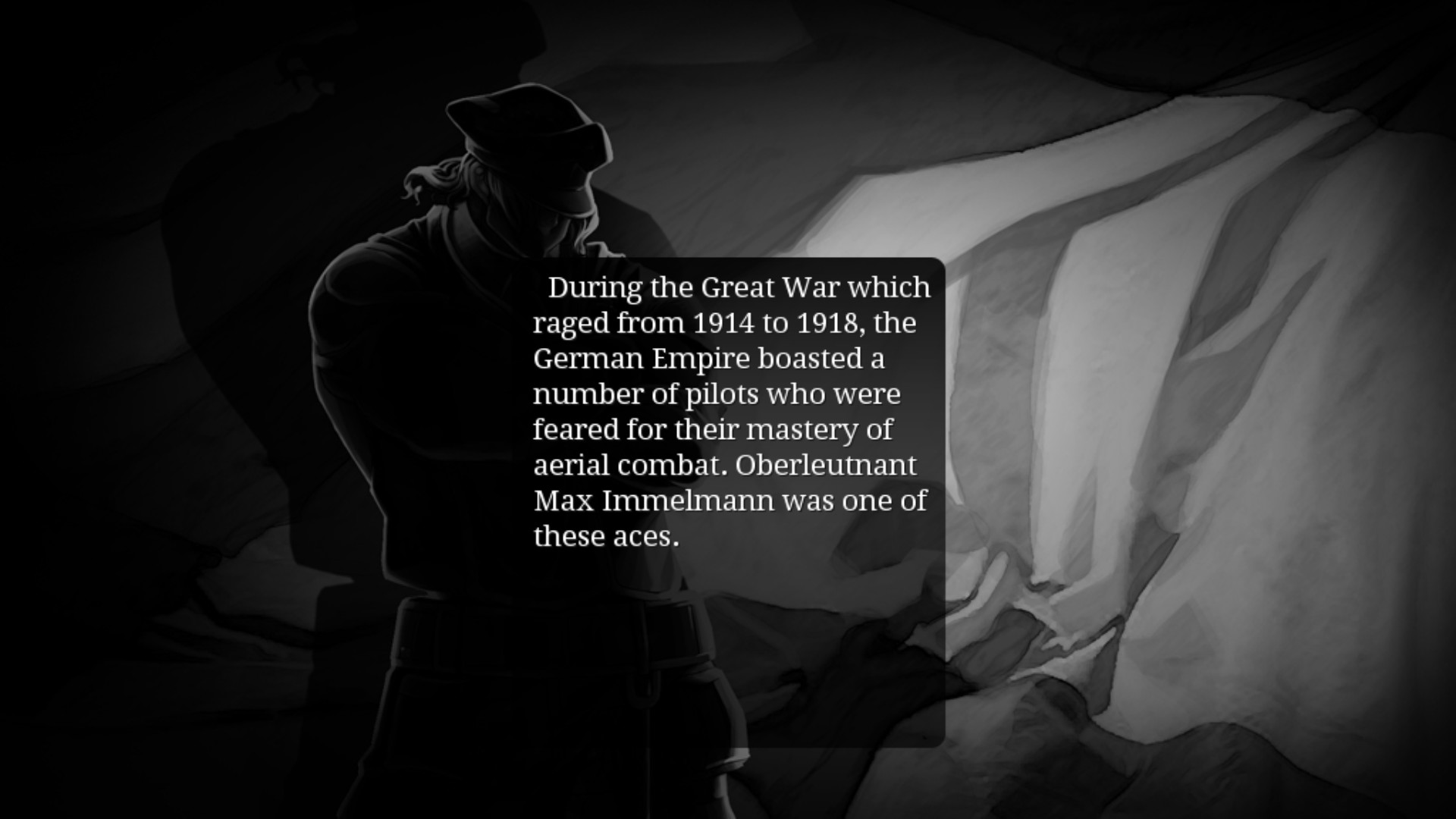
I actually wish I had taken more screenshots for the combat scenes, but I think I was incredibly immersed. It's the type of stuff my brain locks in on and just absorbs. Like, I can tell you right now that Jodan position is the default style that musha carry their swords, which is with the blade close to their shoulder. HOWEVER, when a person takes the Jodan position without a tsurugi, it's traditionally with the sword over the head with the blade facing forward. Details like these were repeated often and were a regular part of the combat scenes. A major reason why I enjoyed Ittetsu's explanations is because he actually knows what he's talking about. You can sense the writer's interest in the subject of swordsmanship in many of the difficult situations that Minato Kageaki finds himself in. You get a taste of how someone who is knowledgeable about swordsmanship would approach a situation. And I think it's one of the unique aspects about Muramasa. Never did I feel like the information was useless. It created tension and made every move that was done in combat, intentional. I wasn't just imagining two dudes samurai mecha just swinging their swords randomly.
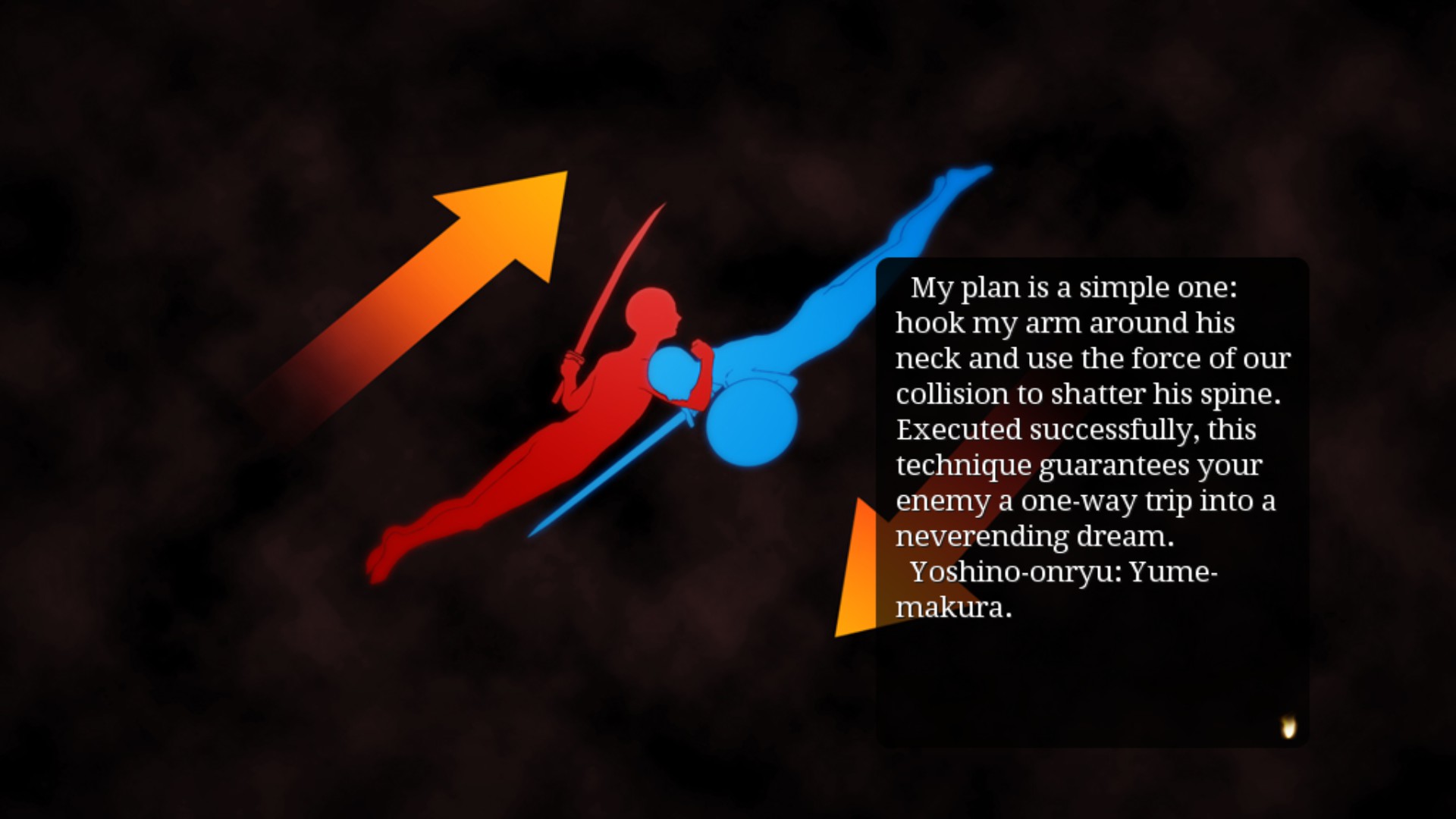
One of the reasons why Muramasa took about 80 hours to finish was because of the multiple endings. The visual novel has about 5 endings, at least one for each of the love interests. In each of the routes, Kageaki also copes with Muramasa's curse in a different way.
For every enemy that Kageaki kills, he has to kill a friend or ally as well. In one route, his love interest wants to protect him from the curse, so she does the killing for him. In another route, Kageaki wants to atone for all the innocent lives he's taken with Muramasa's curse and desperately seeks someone that can end his life for the sake of justice.
Kageaki's personal philiosophy shifts depending on the ending, but none, except the true ending, allow him to accept himself for who he is. Every ending off-loads Kageaki's trauma onto his love interest and I think that's why none, except the final (true) route has a satisfying ending.
Story Theme and Philosophy
After thinking about it for a while, I think the major theme of Full Metal Daemon Muramasa is that we, as people, delude ourselves into justifying harm unto others. I think it's a very controversial thing to say nowadays in the United States. I think a view point like that might come off as centrist or you might be misunderstood as a right-wing apologist.
I've often heard people speak of the cliche in media where the hero spares the villain because otherwise they'll be no better than them. Honestly, I think we need to bring this back because I find it disgusting that something like restraint considered lame. God forbid we look at the bigger picture or develop a sense of empathy.
I've never felt comfortable hoping people die, no matter how messed up they are. I realize this view point can be flawed. From a utilitarian aspect, it's better to remove one person who is causing harm to many for the "greater good". Who will be the one to remove them, though? And how do they justify taking a human life? Will they be able to live with themselves afterwards? What lies have they told themselves, what lies have their neighbors told them so they can feel better about taking another human life?
Muramasa also reminds me of something Yoko Taro, the video game director responsible for Drakengard and Nier, said during a promotional video before the release of Drakenguard 3. It's a quote that has stuck with me for many years.
You don't have to be insane to kill someone. You just have to think you're right.
I think Muramasa's story did an incredible job at antagonizing a concept like "justice" that is widely accepted as good and virtuous. Just like the Yoko Taro quote above, I realized over the course of the story that someone's act of justice can perpetuate a never-ending cycle of violence.
Other Thoughts
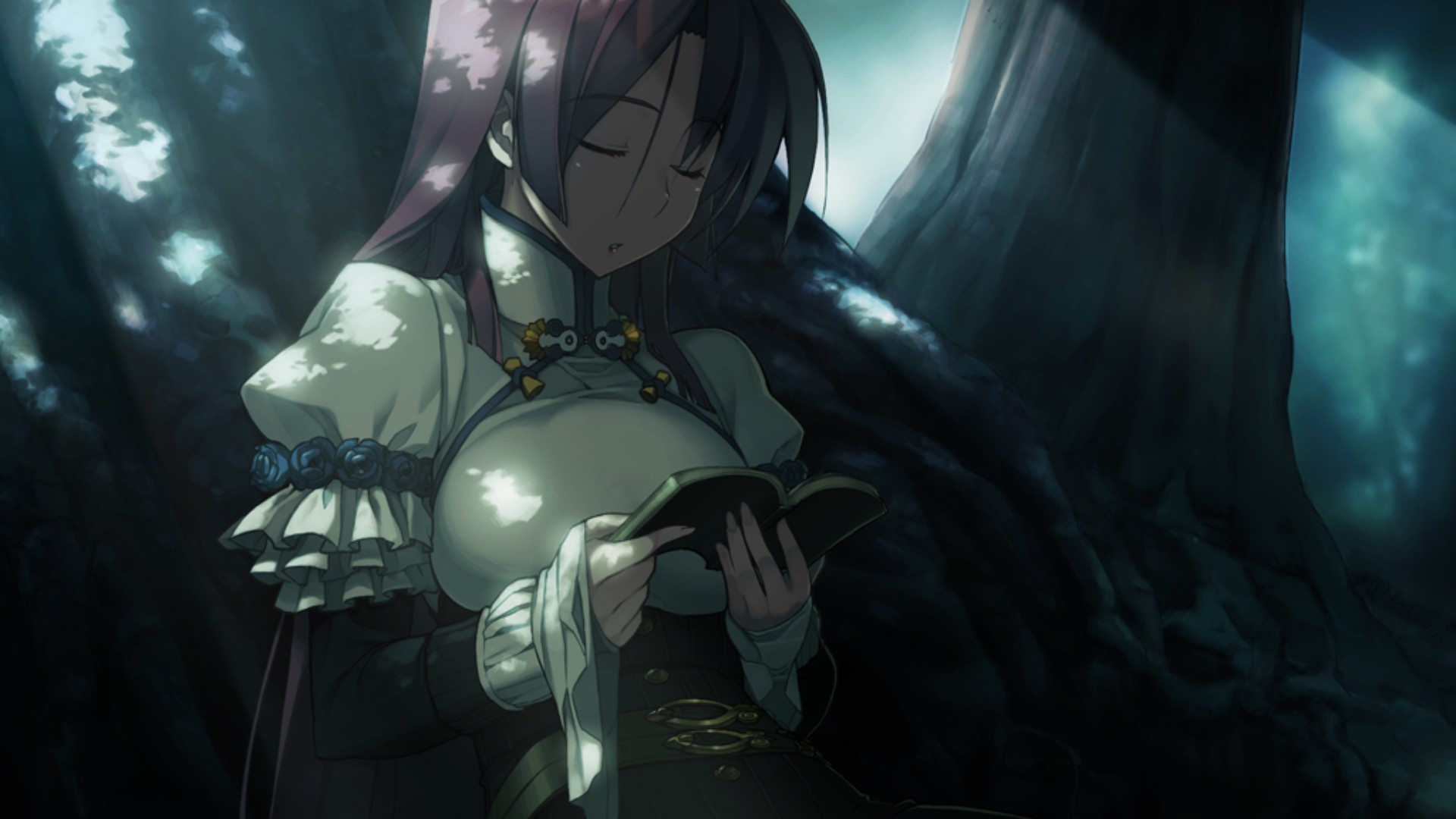
I've been working on this post on and off for a couple of days now. I don't think I intended this to be a review, it's more of a mixed salad of thoughts and ideas from the story that I wanted to talk about.
Full Metal Daemon Muramasa is a visual novel that is going to stick with me for a while. Even though I had an amazing time with it, I don't think I'd recommend it to everyone. There's a lot of trauma, sexual assault, and implied sexual intercourse between certain characters of the same family. However, there are a lot of comedic and genuine scenes in the story as well. The voice actors poured their heart and soul into every line of this visual novel. If I haven't mentioned it already, the VN is fully voiced and I love it so much for more that. These characters all came to life for me and I was able to experience their personal histories and watched them overcome obstacles or fall deeper into despair.
The late David Lynch, one of my favorite filmmakers, always enjoyed exploring human vulnerability. He really enjoyed putting a spotlight on the negative emotions that gives people their unique flaws. He caught a lot of ire back in the day when he made the Twin Peaks movie Fire Walk With Me. According to interviews, the film wanted to explore the tragedy of Laura Palmer, the young woman who was sexually abused and murdered in Twin Peaks, during the last few days of her life before she was killed.
Many at first thought the film was done in poor taste or for shock value. Nowadays, there are people who have overcome their initial impressions and truly see what the movie was about. I won't deny that watching a movie or reading a story about these kinds of topics is easy. And I don't think they should be easily dismissed as media created for self-indulgence, either.
Muramasa's has erotic scenes that are in both camps. While many of these scenes with the few love interests are more on the self-indulgent side, there are a couple that are used to really show how depraved and devoid of empathy certain characters are. It's a bit of a mixed bag. I think in the future I'll write about this one time in college where a professor asked my entire class where the sex was in our design documents for a video game writing class. It left a huge impression on me.
I don't really see it as something "horny", but I realize that a lot of people today are scared to love, feel emotion, or be human (including myself). I want to say that it's okay to feel these things and to not feel ashamed. And I want to say that sometimes people are taken advantage of and harmed, but their stories should also be told so others who have experienced similar situations know that they're not alone.
Sequel
Now, did you know that Full Metal Daemon Muramasa has a sequel planned? I finally get to join thousands of others in the Project Vermilion waiting room! People have been waiting for the sequel for YEARS. However, there's not a lot of hope for it since news is scarce and the original writer for Full Metal Daemon Muramasa left Nitroplus. One can only dream ...


